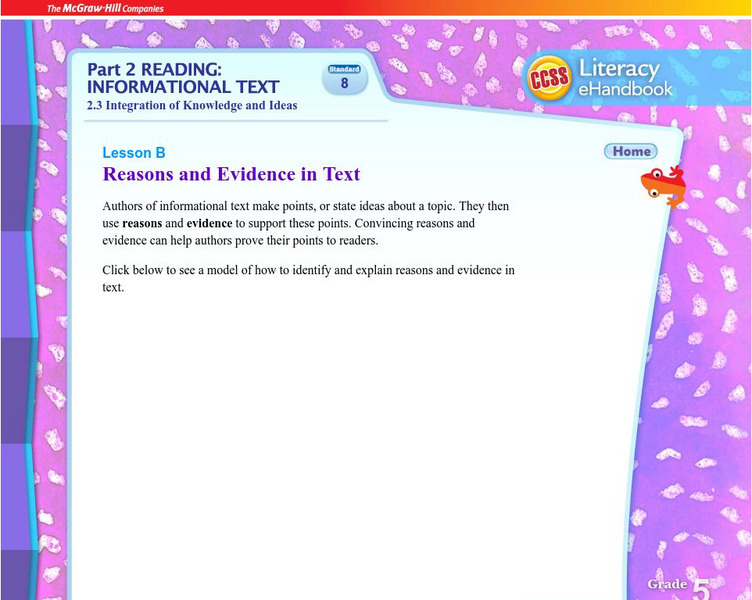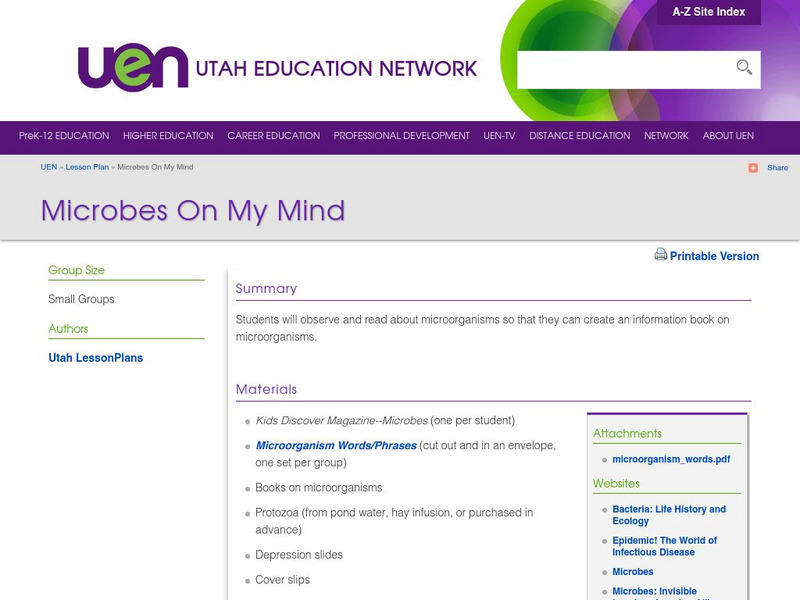CPALMS
Cpalms: What Do You Do With a Tail Like This?
[Free Registration/Login Required] In this lesson, learners will use What Do You Do With A Tail Like This? by Steve Jenkins and Robin Page to identify the main topic and key details using the illustrations and text. Students will work to...
Texas Education Agency
Texas Gateway: Synthesize Ideas and Details in Several Texts (English I Reading)
In this lesson, you will practice making connections between ideas on the same topic. Some of the ideas will differ from each other, so we will learn how to identify and synthesize important details and draw conclusions. W.9-10.7 Research
Florida Center for Reading Research
Florida Center for Reading Research: Exp. Text Structure: Main Idea [Pdf]
A lesson plan in which young scholars read a text and then read it again highlighting the key words and phrases that are important for understanding the text. Materials are included.
Quizlet
Quizlet: 2nd Grade Unit 2 Reading: Main Idea: Flashcards
This interactive set of flashcards, helps students learn the terms and definitions associated with the main idea. These terms include the following: topic, topic sentence, main idea, supporting details, summary, summarize, retell,...
Curated OER
Mc Graw Hill: Identify the Main Topic and Key Details
This is a practice exercise to help teach how to find the main topic of a passage by looking at key details. CCSS.ELA-Literacy.CCRA.R.2
Savvas Learning
Pearson Longman: Main Points, Support Points, and Specific Details
Part of the Pearson Longman series entitled "Sentence Resources for Writers", this site assesses the high school student's ability to identify main points and develop specific details and support points. Includes ten multiple choice and...
Other
Smekens Educational Solutions: Expose K 2 Readers to Annotation Strategies
This article discusses how to begin teaching students in K-2 to record their ideas about text using highlighters, colored pens, large graphic organizers, and sticky notes. Students can retell a story with a storyboard, use a web to find...
Florida Center for Reading Research
Florida Center for Reading Research: Expository Text Structure: Just the Facts
A lesson plan in which learners read a text and complete a graphic organizer to identify the topic and supporting details or facts. Materials are included.
Florida Center for Reading Research
Florida Center for Reading Research: Expository Exploration [Pdf]
A lesson plan in which students read a text and complete a graphic organizer to identify the main idea and supporting details. Materials are included.
Polk Brothers Foundation Center for Urban Education at DePaul University
De Paul University: Center for Urban Education: Reversing the Chicago River [Pdf]
"Reversing the Chicago River" is a one page, nonfiction passage about how the leaders of Chicago reversed the polluted Chicago River so that it emptied into the Mississippi River instead of the lake. It is followed by questions which...
Other
Resource Room: What's the Big Idea?
This exercise can be used to help students develop understanding of main idea and supporting details. Students are given a list of words to analyze, decide the theme and write a common subject that defines the group.
Beacon Learning Center
Beacon Learning Center: Web Lesson: Get the Idea
Read through a lesson about main ideas and supporting details to understand their importance. Practice choosing the main idea of three nonfiction paragraphs. Features practice activities to enhance learning.
Tom Richey
Slide Share: Distinguishing Main Ideas and Supporting Details
This downloadable slideshow focuses on main ideas and supporting details including definitions, identification, and practicing with paragraphs. RI.9-10.2 central idea/summary
ClassFlow
Class Flow: Graphic Organizer Spider Graphic
[Free Registration/Login Required] This graphic organizer provides a webbing framework for students to analyze the main idea/theme and supporting details of a reading passage or historical event. A template for students to follow is given.
Florida Center for Reading Research
Florida Center for Reading Research: Exp. Text Structure: Classic Classifying
A lesson plan in which students read a text and write main ideas and supporting details in boxes on a graphic organizer. Materials are included. [PDF]
Florida Center for Reading Research
Florida Center for Reading Research: Expository Fact Strip [Pdf]
A lesson plan in which students read a text and identify the topic and four facts presented within the text. Materials are included.
Curated OER
Mc Graw Hill: Part 2 Reading: Informational Text: Reasons and Evidence in Text
Reasons and evidence are given by the author to support topics or ideas. In this resource, learn about finding reasons and evidence in a text. Includes downloadable worksheet.
Lumen Learning
Lumen: Boundless Communications: Deploying Supporting Materials
This lesson focuses on supporting materials including types of supporting materials and how to effectively incorporate them into your presentation. W.9-10.2b Strong Support, W.11-12.2b Topic/support/aud
Better Lesson
Better Lesson: Sl.4.4: Orally Report on a Topic or Text
Links to 75 lessons and activities that build student skills in standard SL.4.4: Report on a topic or text, tell a story, or recount an experience in an organized manner, using appropriate facts and relevant, descriptive details to...
Education.com
Education.com: Sl.4.4 Worksheets: Orally Report on a Topic or Text
[Free Registration/Login Required] A site with links to 2 worksheets and 6 lessons that can be downloaded and printed for student use while building skills with standard SL.4.4: Report on a topic or text, tell a story, or recount an...
Smithsonian Institution
Smithsonian Learning Lab: Wwii on the Home Front: Civic Responsibility
Smithsonian Education presents a lesson covering the WWII's propaganda program which enforced the ideals of Civic Responsibility. Provides eight pages of poster examples, detailed background over the time period, and the goals of the...
Texas Education Agency
Texas Gateway: Themes in Literary Texts (English 6 Reading)
Learn how to infer the implicit theme in a work of fiction, distinguish theme from topic, and make complex inferences using textual evidence.
CPALMS
Cpalms: Buzzing Tails
This video tutorial features the character named Bobby who will assist students as they search for key details in a nonfiction text.
Utah Education Network
Uen: Lesson Plan: Microbes on My Mind
A four-day sixth-grade science lesson on the topic of microbes. Students learn information about microbes and their functions through personal observation and several non-fiction texts, some of which are provided.


![Florida Center for Reading Research: Exp. Text Structure: Main Idea [Pdf] Lesson Plan Florida Center for Reading Research: Exp. Text Structure: Main Idea [Pdf] Lesson Plan](https://content.lessonplanet.com/knovation/original/509112-af7e4c332bf039792a97bc877297d1cd.jpg?1661786955)



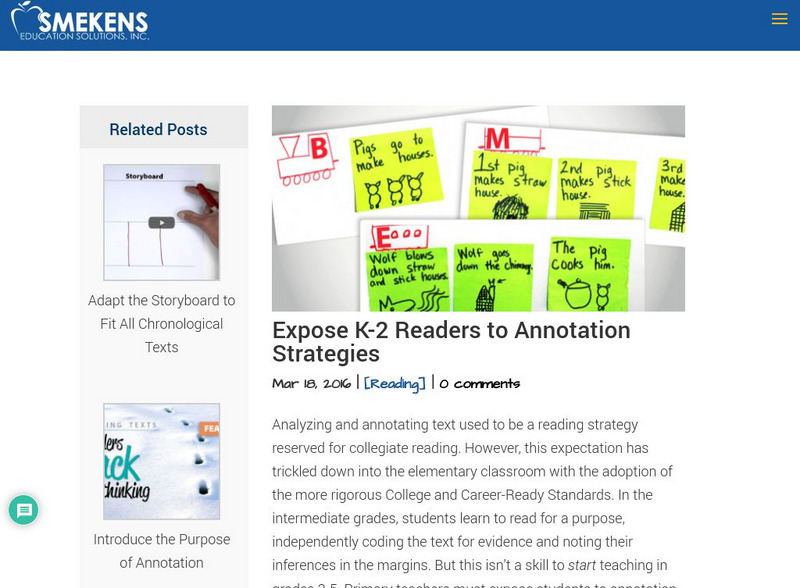
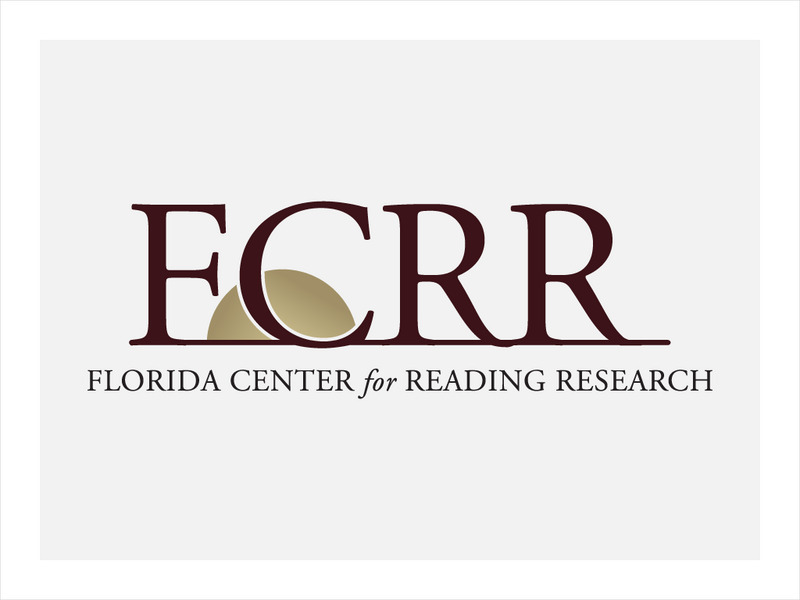
![Florida Center for Reading Research: Expository Exploration [Pdf] Lesson Plan Florida Center for Reading Research: Expository Exploration [Pdf] Lesson Plan](https://content.lessonplanet.com/knovation/original/509114-1621b87800788ad03f8f6464b347c698.jpg?1661786951)
![De Paul University: Center for Urban Education: Reversing the Chicago River [Pdf] Unit Plan De Paul University: Center for Urban Education: Reversing the Chicago River [Pdf] Unit Plan](https://d15y2dacu3jp90.cloudfront.net/images/attachment_defaults/resource/large/FPO-knovation.png)
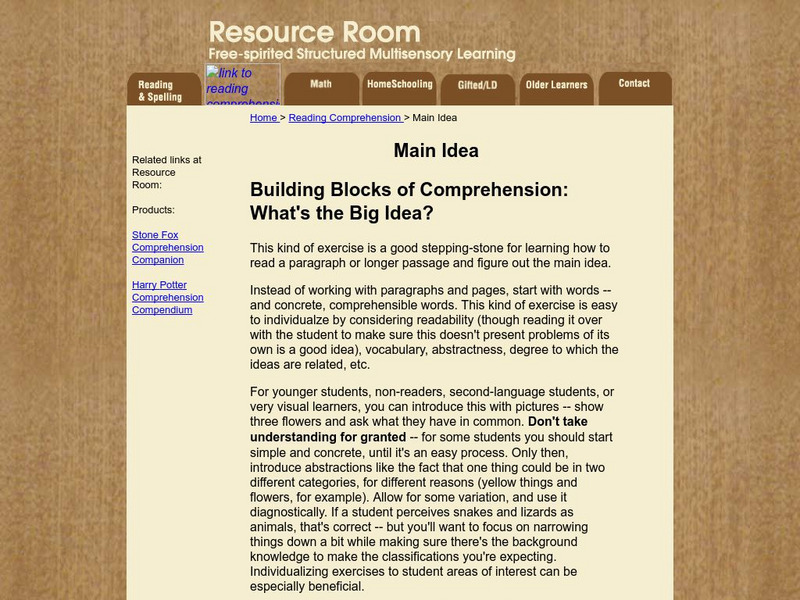


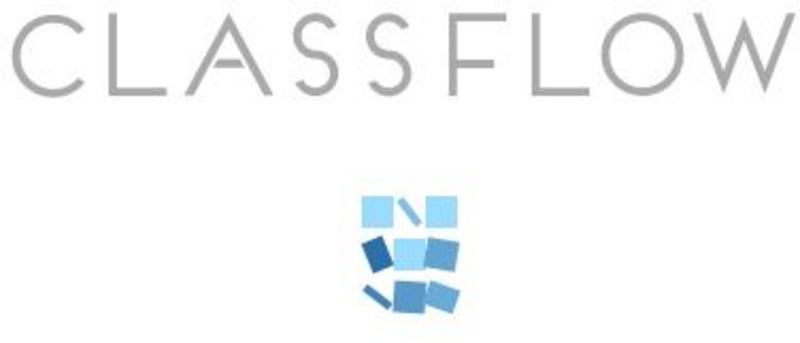
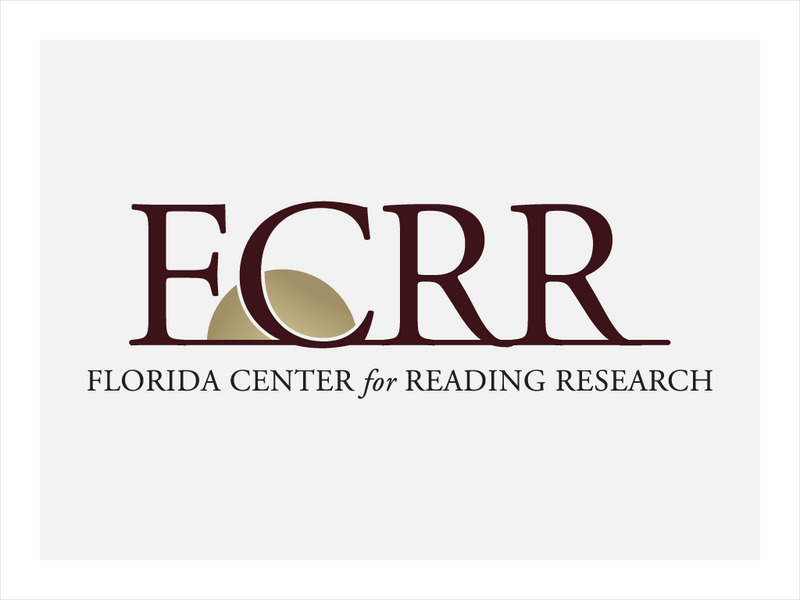
![Florida Center for Reading Research: Expository Fact Strip [Pdf] Lesson Plan Florida Center for Reading Research: Expository Fact Strip [Pdf] Lesson Plan](https://content.lessonplanet.com/knovation/original/101726-6e9433c83ac2e2bbad9c1c7411098251.jpg?1661786954)
